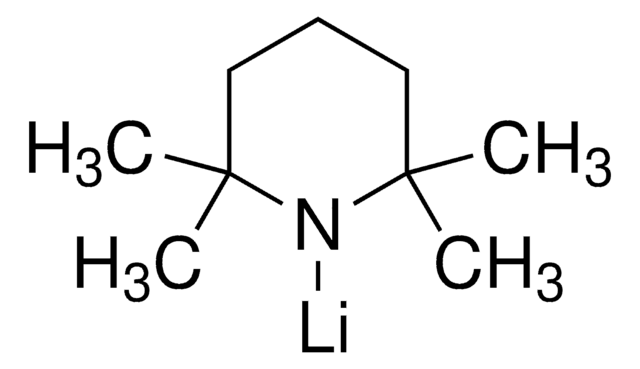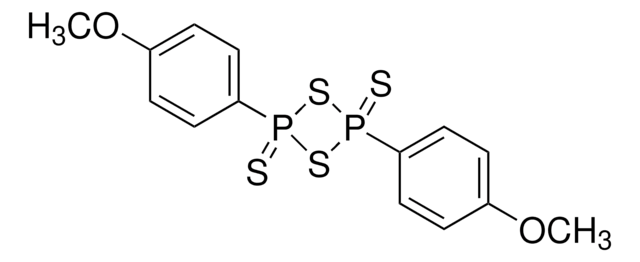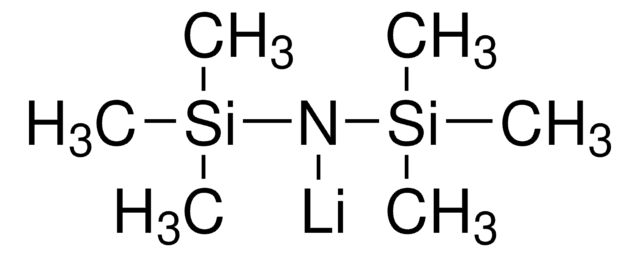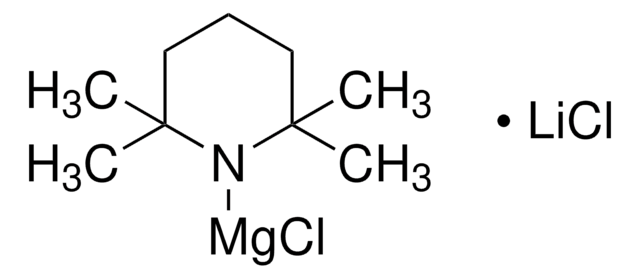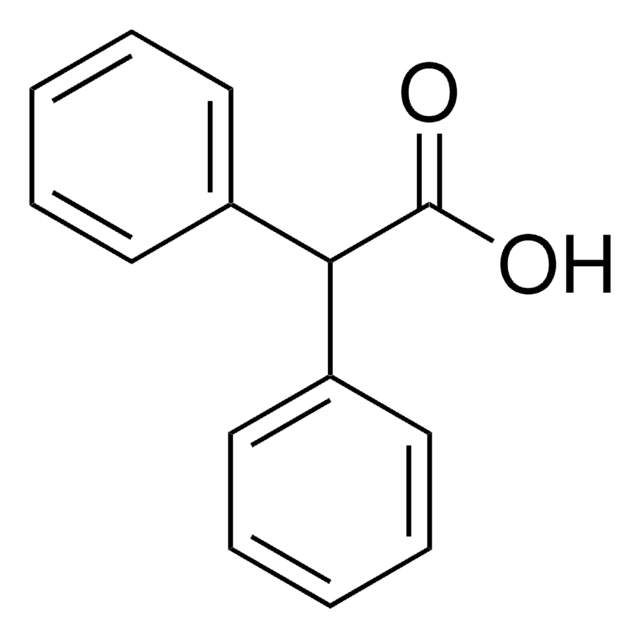296961
Lithium diisopropylamide
10 wt. % suspension in hexanes
Sinónimos:
LDA
About This Item
Productos recomendados
densidad de vapor
>1 (vs air)
concentración
10 wt. % suspension in hexanes
densidad
0.864 g/mL at 25 °C (lit.)
grupo funcional
amine
cadena SMILES
[Li]N(C(C)C)C(C)C
InChI
1S/C6H14N.Li/c1-5(2)7-6(3)4;/h5-6H,1-4H3;/q-1;+1
Clave InChI
ZCSHNCUQKCANBX-UHFFFAOYSA-N
¿Está buscando productos similares? Visita Guía de comparación de productos
Palabra de señalización
Danger
Frases de peligro
Clasificaciones de peligro
Aquatic Chronic 2 - Asp. Tox. 1 - Eye Dam. 1 - Flam. Liq. 2 - Repr. 2 - Skin Corr. 1B - STOT RE 1 Inhalation - STOT SE 3
Órganos de actuación
Central nervous system, Nervous system
Código de clase de almacenamiento
3 - Flammable liquids
Clase de riesgo para el agua (WGK)
WGK 3
Punto de inflamabilidad (°F)
-14.8 °F - closed cup
Punto de inflamabilidad (°C)
-26 °C - closed cup
Elija entre una de las versiones más recientes:
¿Ya tiene este producto?
Encuentre la documentación para los productos que ha comprado recientemente en la Biblioteca de documentos.
Nuestro equipo de científicos tiene experiencia en todas las áreas de investigación: Ciencias de la vida, Ciencia de los materiales, Síntesis química, Cromatografía, Analítica y muchas otras.
Póngase en contacto con el Servicio técnico

